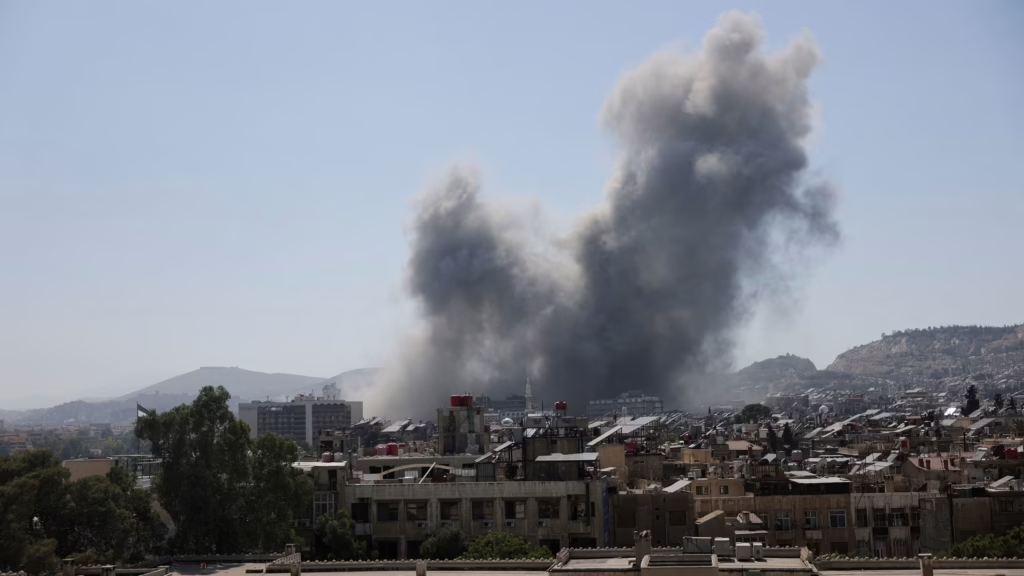Damascus was rocked by a powerful series of airstrikes on July 16, 2025, as Israeli forces targeted the Syrian Defense Ministry headquarters in what appears to be a calculated military escalation. The strikes, which were broadcast live by Syrian state television, caused significant panic and have drawn global attention.
The airstrikes were reportedly focused on the entrance gate and surrounding military installations of the ministry. Eyewitness accounts and footage show massive explosions and plumes of smoke as buildings were hit, sending shockwaves across the capital.
These attacks are unfolding in the context of deepening unrest in southern Syria. The region, particularly around Sweida, has been a flashpoint in recent weeks as clashes erupt between the Syrian military and Druze community fighters. More than 250 people have reportedly died in the ongoing confrontations. Israel has stepped in, asserting that its military operations aim to protect the Druze population from what it describes as “government aggression.”
Israeli officials have warned of “more painful blows” unless Syrian forces withdraw from the contested southern regions. Over the past three days, Israel has carried out multiple strikes not just in Damascus but across southern provinces, including attacks on convoys and military airbases suspected of launching operations against Druze towns.
The interim Syrian government, still recovering from the long civil war and the fall of the Assad regime, now faces renewed instability. The new administration under President Ahmed al‑Sharaa has condemned the Israeli strikes, calling them a violation of Syrian sovereignty and a threat to regional peace.
International reactions have been swift. Arab League nations, Turkey, and Iran have criticized the Israeli campaign, urging restraint and diplomatic engagement. However, Israel remains firm in its stance, demanding that Damascus cease all military activities in Druze-majority areas.
This latest escalation signals a dangerous new phase in the post-war Syrian landscape. With international diplomacy on edge and sectarian tensions rising, the region braces for what could become a prolonged conflict involving multiple actors.
As the situation unfolds, global observers watch closely, hoping for de-escalation but preparing for a broader fallout.


